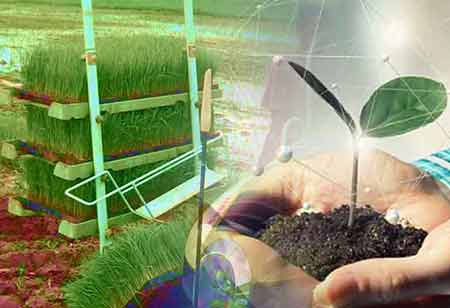Thank you for Subscribing to Agri Business Review Weekly Brief
Artificial Intelligence And Big Data Boost Smart Agriculture
While the terms 'big data and artificial intelligence commonly get thrown around when discussing generalized industry progress, their integration into smart agriculture.

By
Agri Business Review | Monday, August 29, 2022
Stay ahead of the industry with exclusive feature stories on the top companies, expert insights and the latest news delivered straight to your inbox. Subscribe today.
AI & Big data plays various roles in smart agriculture, which can be split into data acquisition and model training.
Fremont, CA: While the terms 'big data and artificial intelligence commonly get thrown around when discussing generalized industry progress, their integration into smart agriculture.
Big Data in Agriculture: A Two-Part Approach
Big data plays various roles in smart agriculture, split into data acquisition and model training. While the applications of either methodology are nearly limitless, their effect on the progress and efficiency of agriculture is dramatic.
Smart Agriculture and Big Data Acquisition
Sensors have become smaller, more advantageous, and more energy-efficient. While a single sensor may not generate a significant amount of data, an array of edge nodes containing a multitude of sensors distributed across several acres of farmland produces vast amounts of data.
Big data can be utilized in a variety of actionable ways. It creates dashboards and conditions monitoring infrastructures and offers farmers intelligence that would never be accessible at the scale big data processing allows.
Big Data Applications in Agriculture
The first facet of big data involves using cameras, which generate massive amounts of data. Transferring this data can be pricey, as it may need high bandwidth and large amounts of off-site storage. Next, processing this immense amount of big data requires substantial computing abilities and a capable infrastructure.
With this infrastructure, the farming process can be easily optimized and controlled with minimal effort.
AI in Agriculture
The classic example utilized to explain deep learning, a sub-technology of AI, prescribes a methodology to get a simple camera to interpret the handwritten text.
This example illustrates the huge amount of data required to train an easy deep learning model to be semi-successful. While probably an oversimplification of what AI is capable of, getting a computer to understand written numerals can be very complex.
The smart agriculture industry takes this complication in stride and employs AI in extremely useful ways, such as identifying crucial growth stages of plants.
Application of AI in Agriculture: Plant Identification
The useUsing cameras to detect different plants is an even more effective application of deep learning in agriculture. This AI application is implemented on tractors that distribute fertilizer, pesticide, herbicide, and water.
Cameras and their associated edge computers examine the ground as a tractor moves, identifying and classifying plants and insects as they appear. According to pre-trained, deep-learning neural networks, the classification of plants and animals conducts a controller to distribute fertilizer, pesticide, herbicide, or, even more significantly, not distribute anything.
This intelligent sensing method restricts the number of chemicals used by accurately using them only when needed. AI solution has accomplished a 90% reduction in herbicide costs by selectively applying it when required, potentially leading to a global reduction of 2.5 billion pounds of herbicide.
Future of AI in Agriculture
Artificial intelligence is employed far beyond plant identification in impacting smart agriculture. AI can be employed in navigation, sensor analysis, asset management, threat detection, mass land analysis, and drone flight.
Artificial intelligence proceeds to evolve, and its applications in smart agriculture are only beginning to flourish. Nonetheless, as is true with most industries, the implementation of AI will continue to be seen in more entry-level models for various uses.
Big data and artificial intelligence are mutually exclusive — as one advances, the other benefits. As it advantages, it progresses, and the cycle continues to develop both technologies. In more applicable terms, using big data collecting activities in smart agriculture will create more resilient and useful AI models. Using these models will create more effective methods of smart agriculture, as we see with companies.





